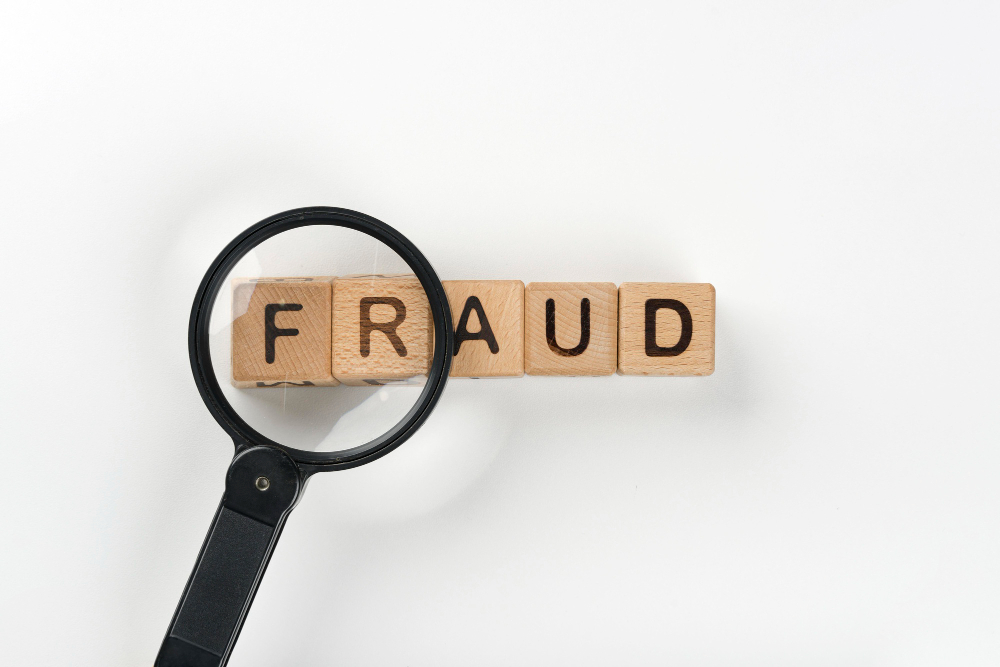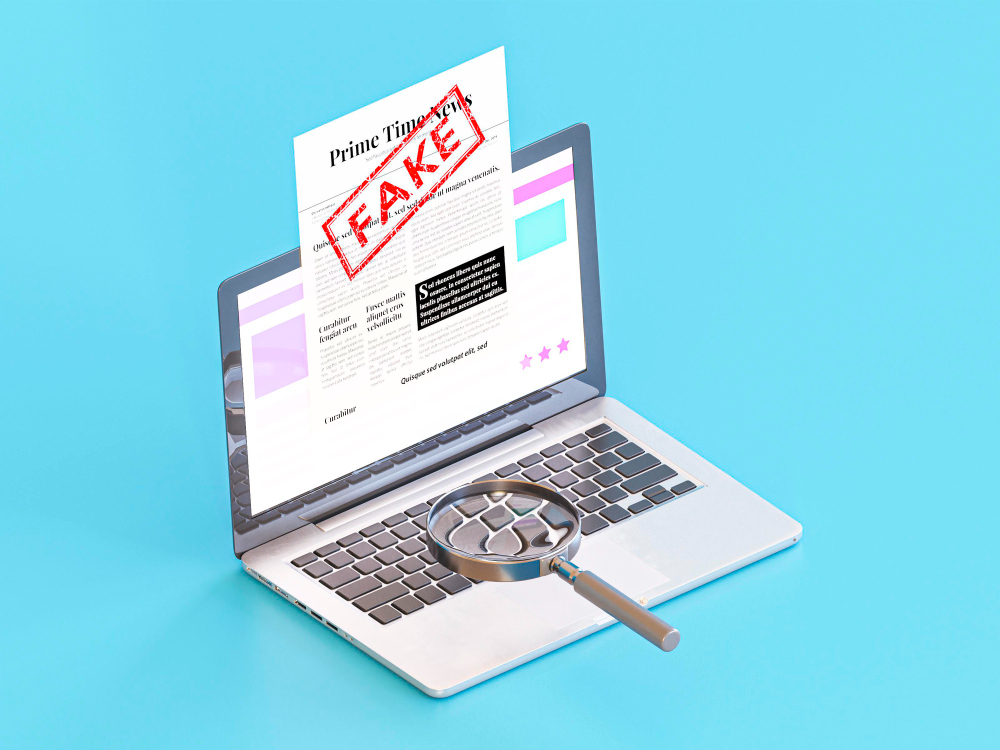What To Know About Ad Fraud (And The Ultimate Guide To Prevent It)
According to Search Engine Land, advertisers lost over $84 billion in 2023 to ad fraud. This equates to a staggering 22% of all online ad spend. But what is ad fraud? The prevalence of this insidious practice has grown hand in hand with the rise of online advertising. It’s clear that advertisers must be more wary than ever of digital advertising scams.
In this essential guide, we will take a deep dive into what ad fraud is, the common types of ad fraud, and its ramifications in the digital advertising world. We will also explore a variety of methods advertisers can use to protect themselves from ad fraud and how Rayobyte’s vast network of residential proxies can help protect your advertising budget.
The Best Location-Specific Results
Want to scrape or verify results from a given region? Residential proxies offer the best success rates 💪

What Is Ad Fraud?

Ad fraud is the deceptive and illicit practice of manipulating, misrepresenting, or distorting key aspects of digital advertising campaigns for fraudulent gains. It involves activities aimed at artificially inflating metrics, misrepresenting user engagement, and generating revenue through dishonest means in the online advertising ecosystem.
Cybercriminals commit ad fraud for various reasons, including making money or gaining competitive advantage. Ad fraud can have detrimental effects on advertisers, publishers, and the entire digital advertising sphere. These fraudulent activities compromise the integrity of ad campaigns and undermine trust between advertisers and publishers. As a result, ad fraud often leads to financial losses for advertisers
What is mobile ad fraud?
While the term “ad fraud” involves advertising fraud over various digital platforms, “mobile ad fraud” specifically pertains to fraudulent activities and schemes that target mobile advertising campaigns on devices like smartphones and tablets. This form of ad fraud involves deceptive practices aimed at manipulating metrics, engagement, and revenue in the mobile advertising realm.
What is invalid traffic (IVT)?
Invalid traffic (IVT) encompasses illegitimate forms of traffic in digital advertising that inflate ad engagement statistics. This includes both fraudulent and non-fraudulent sources of invalid traffic. Invalid traffic can result from a variety of factors, including accidental clicks, technical issues, and fraudulent activities.
The Media Rating Council, Inc. (MRC) breaks IVT down into two categories: General Invalid Traffic (GIVT) and Sophisticated Invalid Traffic (SIVT).
General invalid traffic (GIVT)
GIVT refers to the more straightforward or basic types of invalid traffic. GIVT is definitively identified as invalid without requiring a detailed investigation. It typically includes obvious cases of accidental clicks and non-human bot traffic.
Sophisticated invalid traffic (SIVT)
Compared to GIVT, SIVT involves more complex and sophisticated methods of generating invalid traffic. This encompasses fraudulent activities that bad actors design to be more challenging to detect. Such sophisticated methods often involve tactics like domain spoofing, ad stacking, pixel stuffing, and other techniques fraudsters use to appear more legitimate and bypass basic detection methods. We will discuss these methods in more detail in the next section.
Types of Online Marketing Frauds

What is digital ad fraud, and what are some of its more common forms? As we’ve already described, digital ad fraud involves online marketing scams for the fraudster’s illicit gain. Let’s take a look at some of the many types of ad fraud that are prevalent today.
Click fraud
Click fraud often involves both manual and automated methods. In this type of ad fraud, online ads receive repeated clicks with the purpose of driving up an advertiser’s expenses, depleting their budget, or artificially inflating click-through rates. These fraudulent clicks can come from human click farms or automated scripts. Click fraud can drain the advertiser’s resources and lead to potentially misleading performance metrics.
Click hijacking
Click hijacking, which is also often called clickjacking or malvertising, is a deceptive maneuver in which a hacker surreptitiously places a hidden, transparent layer atop a legitimate ad or webpage. When an unsuspecting user interacts with an innocuous-looking element, they unwittingly click on an ad hidden beneath, contributing to fraudulent clicks.
Domain spoofing
In domain spoofing, which is also called impression laundering or arbitrage, malicious actors manipulate the content of a website or app. Their aim is to make it seem like advertisers have purchased space on a premium site when, in reality, this is not the case. Advertisers believe they are running ads on reputable websites, but the traffic actually goes to less reputable or fake domains.
SDK spoofing
When fraudsters pretend to install a mobile software development kit (SDK) within a mobile app to generate fake in-app ad impressions and interactions, this is known as SDK spoofing. This type of digital ad fraud is most prevalent in mobile advertising.
Ad injection
Ad injection is the unauthorized addition of ads to web pages, often through browser extensions or malware. These injected ads can disrupt the user experience and divert ad revenue away from legitimate publishers.
Ad stacking
Another type of display ad fraud is ad stacking, which is a deceptive technique that involves layering multiple ads on top of each other within a single ad placement. Ad stacking makes it challenging for users to see the hidden ads, yet each impression registers as a separate interaction. This results in deceptive ad engagement metrics.
Fake app installation
Fraudsters create fake mobile apps or use malicious methods to simulate app installations. This generates fraudulent app download metrics, which can lead to artificially inflated advertising campaign performance.
Geo-masking
In geo-masking, fraudsters manipulate their actual geographic location to appear as if they are in a different, often more lucrative, location. This can deceive advertisers into believing there is increased demand and greater pricing potential for running their ads in the desired location.
Pixel stuffing
Pixel stuffing involves placing ads within tiny 1×1 pixel frames on a web page, making these so-called ads nearly invisible to the human eye while still registering impressions. This deceptive practice inflates ad impressions without delivering actual value to paying advertisers.
Cookie stuffing
Placing third-party cookies on a user’s device without the user’s knowledge or consent is known as cookie stuffing. This can falsely attribute conversions and engagement to a particular ad or campaign, often misleading advertisers with misrepresented performance data.
Bot traffic
Computer programs or bots are another source of fraudulent activity within the digital advertising ecosystem. Fraudsters design these bots to mimic human behavior online and to interact with online ads, websites, or apps. The primary goal of bot-driven ad fraud is to generate a large volume of fake engagement, such as clicks, impressions, and interactions.
Because bots may appear as human users, it’s difficult to detect them through standard means, which makes bot fraud a unique challenge for advertisers. Combatting bot-driven ad fraud requires a combination of sophisticated fraud detection tools, machine learning algorithms, and industry best practices to differentiate between genuine human interactions and bot-generated actions.
What Is Programmatic Ad Fraud?

Programmatic advertising is a form of digital marketing in which software programs decide when and where to display ads for a particular audience or demographic. These programs make such decisions using various rules and user characteristics, such as:
- The user’s browsing history
- The advertiser’s budget
- Keywords related to the user’s search and browsing history and the website in question
Programmatic ad fraud occurs when malicious actors take advantage of programmatic advertising by employing malware, bots, or click farms to conduct any of the aforementioned forms of digital ad fraud. This particular type of ad fraud can be difficult to detect and stop because the advertiser does not directly control the websites that display their ads.
Who Commits Ad Fraud?
Various individuals, organizations, and entities engage in ad fraud with the goal of benefiting illicitly from digital advertising campaigns. The motives behind ad fraud can range from financial gain to malicious intent. Below, we’ll go through some of the main parties who may be involved in committing ad fraud.
Cybercriminals
These are individuals or organized groups who engage in ad fraud to generate revenue. They often use automated bots, fake websites, and other fraudulent tactics to trick advertisers into paying for fake clicks, impressions, or conversions.
Cybercriminals who distribute malware may use ad fraud as one of their monetization strategies. Malware-infected devices can generate fraudulent clicks or impressions without the user’s knowledge.
Competitors
Some companies engage in ad fraud to undermine the advertising efforts of their competitors. They might click on their competitors’ ads or engage in other fraudulent activities to deplete the competition’s ad budget or damage their reputation.
Publishers
In some cases, unscrupulous publishers may engage in ad fraud by generating fake traffic or artificially inflating metrics to attract more advertisers and increase their ad revenue.
Affiliates
Affiliate marketers can commit ad fraud by using illegitimate tactics to earn commissions on the products or services they promote. Affiliate fraud can include cookie stuffing, click fraud, and other deceptive practices.
Ad networks and exchanges
While most ad networks and exchanges work diligently to prevent ad fraud, there have been cases where unscrupulous networks or exchanges have allowed fraudulent traffic to flow through their systems so they can benefit financially.
Ad fraud rings
Some ad fraud operations are highly organized, with multiple individuals working together in what is known as an ad fraud ring. These rings may employ a combination of tactics, including bot traffic, click farms, and domain spoofing, to carry out large-scale fraud.
Individuals seeking ad revenue
Some individuals may engage in ad fraud to earn money through ad revenue-sharing programs, such as pay-per-click or pay-per-impression models. They use various techniques to inflate their own earnings.
What Are the Effects of Ad Fraud?

Ad fraud has several significant and far-reaching effects on various stakeholders within the digital advertising ecosystem, including advertisers, publishers, and consumers.
Financial losses
Advertisers bear the brunt of financial losses due to ad fraud. They pay for fake or low-quality traffic and interactions, which leads to wasted ad spend and a lower return on investment (ROI).
Diminished trust
Ad fraud erodes trust between advertisers and publishers. When advertisers believe they are reaching a genuine audience, but their ads are shown to bots or fake users, it damages their trustworthiness and relationships within the advertising industry.
Artificially inflated campaign metrics
Ad fraud artificially inflates key campaign metrics such as click-through rates, impressions, and engagement. This can lead to misleading performance data, making it difficult for advertisers to accurately assess the effectiveness of their campaigns.
Decreased credibility
The presence of ad fraud can reduce the credibility of digital advertising as a whole, making it harder for advertisers to justify their investments in online advertising.
Budget constraints
Advertisers may become more cautious and allocate smaller budgets to digital advertising due to concerns about ad fraud. This can limit the growth and potential of the digital advertising industry.
Disrupted user experience
Ad injection and intrusive ad fraud practices can disrupt the user experience, as consumers are exposed to unwanted and potentially harmful ads. This can negatively impact public perceptions of the advertising industry.
Wasted resources
Efforts to combat ad fraud demand additional resources and technology investments from advertisers and publishers. As a result, they must divert resources away from other critical aspects of their marketing and business operations.
Legal and regulatory concerns
Ad fraud can lead to legal and regulatory challenges, especially when fraudulent activities involve privacy violations or other illegal practices. Advertisers and publishers may face legal consequences.
Competitive disadvantage
Ad fraud may give an unfair competitive advantage to unscrupulous actors who engage in fraudulent practices. Legitimate advertisers may then find it challenging to compete effectively in the marketplace.
Reputational damage
Ad fraud can tarnish the reputation of advertising networks, exchanges, and publishers involved in fraudulent activities. This, in turn, can lead to a loss of business partners and advertisers.
Consumer privacy risks
Some ad fraud tactics, such as malware distribution, pose risks to consumer privacy and data security, potentially leading to identity theft and other malicious activities.
How To Prevent Ad Fraud

Advertisers can employ various proactive countermeasures and technologies to prevent ad fraud, thus protecting the accuracy and effectiveness of their digital advertising campaigns. Efforts to combat ad fraud involve implementing fraud detection tools, industry standards, and best practices, which we will detail below.
Choose reputable partners
Select advertising partners who have established a strong reputation for ethical practices and transparency. Collaborating with trustworthy, reputable ad networks, exchanges, and publishers is the first line of defense against ad fraud. Before entering into any agreements, research potential partners, examine their track record, and engage with those who are committed to maintaining the integrity of the digital advertising ecosystem.
Implement fraud detection tools
Employ robust fraud detection solutions and engage third-party verification services to identify and block fraudulent traffic. You should also continuously monitor ad campaigns to promptly detect and mitigate any suspicious activity, thereby safeguarding your ad budget from fraudulent drains.
Adopt ad fraud standards
Adhere to industry standards and initiatives designed to combat ad fraud, such as the Trustworthy Accountability Group’s (TAG) Certified Against Fraud program. These standards provide a framework for identifying and addressing ad fraud, ensuring a unified industry effort to combat fraudulent practices.
Use ads.txt and app-ads.txt
Implement ads.txt for websites and app-ads.txt for mobile apps to publicly declare authorized sellers of ad inventory. These mechanisms fortify transparency, help prevent domain spoofing, and deter unauthorized reselling of ad space so you can preserve the integrity of your ad placements.
Employ CAPTCHA and verification
Implement CAPTCHA challenges or human verification methods to ensure that interactions with your ads come from actual human users, not automated bots. This adds an essential layer of security to your campaigns and helps thwart fraudulent activity.
Implement click tracking and validation
Institute rigorous click tracking and validation procedures, examining the authenticity of clicks and conversions. By scrutinizing these interactions, you can swiftly detect anomalies, irregularities, or patterns that can indicate fraudulent activity, ensuring a more accurate representation of campaign performance.
Analyze traffic quality
Regularly assess the quality of traffic sources in your advertising campaigns. Also, look into the behavior of users to pinpoint unusual patterns, and delve into any atypical activity that may suggest fraudulent traffic.
Employ geographic targeting
Utilize geographic targeting to restrict ad exposure to specific regions. This practice minimizes the risk of falling victim to geo-masking and allows you to maintain control over where your ads are seen.
Set campaign rules and limits
Establish comprehensive campaign rules and limits for ad campaigns, including frequency capping and bid restrictions. These controls help prevent overexposure to potential fraudulent interactions while maintaining a measure of cost control.
Implement bot mitigation solutions
Use specialized bot mitigation solutions that are capable of detecting and blocking malicious bot traffic. These measures actively safeguard your ad campaigns from fraudulent clicks and impressions generated by automated programs.
Segment and analyze data
Segment your data and analyze your performance metrics to uncover any unusual trends or patterns that may signify fraudulent activity. Employing a vigilant approach allows you to detect and mitigate threats as early as possible, enhancing your campaigns’ integrity.
Stay informed and educated
Keep up to date with the latest ad fraud tactics and emerging threats in the dynamic digital advertising landscape. Regularly update your knowledge to remain one step ahead of fraudsters and maintain a proactive stance against fraudulent practices.
Report suspicious activity
Take immediate action when you observe any suspicious or fraudulent activity. Report such instances to ad networks, exchanges, and relevant industry organizations, such as the Interactive Advertising Bureau (IAB). By doing so, you will contribute to a collective effort to combat ad fraud.
Review and refine strategies
Continuously review, adapt, and refine your anti-fraud strategies. Fraudsters constantly evolve their tactics, and your strategies should evolve in tandem. Proactively adjusting your approach ensures ongoing protection against various fraudulent practices.
Adopt blockchain technology
Explore the potential of blockchain technology as a means of increasing transparency and trust in the ad supply chain. By leveraging blockchain’s immutable ledger, you can track ad transactions, secure your ad placements against fraud, and maintain the highest level of digital advertising credibility.
Invest in ad verification
Consider allocating resources to invest in ad verification services that independently validate ad impressions, clicks, and campaign performance. These services add an extra layer of trust and transparency to your ad campaigns, assuring advertisers of the integrity of their digital investments.
Prevent Fraud Using Ad Verification Proxies

Using residential proxies for ad verification can help streamline your verification processes. Ad verification proxies can help prevent fraud by allowing advertisers to monitor and validate their digital advertising campaigns in real time. There are many ways in which ad verification proxies can assist advertisers in preventing fraud.
Bot detection
Ad verification proxies can identify non-human traffic, such as bot-generated clicks and impressions. By filtering out bot traffic, you can ensure that your ads display for real users who might convert into customers.
Geolocation verification
Proxies can also confirm the geographic location of the users who interact with your ads. This helps prevent fraudulent traffic that originates in different regions or countries, which can skew targeting and performance metrics.
Ad placement verification
Ad verification proxies can monitor where and how your ads display. They can verify that your ads appear on legitimate and brand-safe websites. That way, your advertising content doesn’t display on fraudulent or inappropriate sites.
Viewability monitoring
These proxies can assess your ads’ viewability to ensure that they are displayed in a way that users can actually see them. This prevents your ads from being involved in ad-stacking or pixel-stuffing schemes.
Click fraud detection
Ad verification proxies can track click-through rates and detect click fraud so you can avoid click spamming or click injection.
Ad impression verification
By verifying that the impressions reported match the actual impressions delivered, proxies can help you detect discrepancies in the number of times users see your ads.
Fraudulent publisher detection
Ad verification proxies can identify publishers with a history of fraudulent activities so you know which sites to avoid.
Ad tag and creative verification
Proxies can help verify that fraudsters aren’t altering your ad tags and creatives. In this way, you can ensure your ads don’t display unapproved content.
Real-time alerts
Real-time alerts from proxies can alert you when suspicious or fraudulent activity is detected. You can then take immediate action.
Data analytics
Ad verification proxies often provide detailed analytics and reports on campaign performance and ad fraud incidents. This data helps advertisers optimize their campaigns and make informed decisions.
Use Rayobyte Proxies for Ad Verification

As the complexity of digital advertising fraud increases, so does the need for robust ad verification and fraud detection measures. Rayobyte offers the world’s most reliable residential proxies, providing a fast, ethically-sourced way to verify your ad placements and circumvent ad fraud.
With access to a sizeable pool of residential IPs for all of your data needs, Rayobyte allows you to verify ad campaigns across multiple locations around the world. Rest assured that your ad campaigns will run smoothly, reach the intended audience, and avoid hijacking by malicious actors with residential proxies from Rayobyte. Start your free trial today!
The Best Location-Specific Results
Want to scrape or verify results from a given region? Residential proxies offer the best success rates 💪

The information contained within this article, including information posted by official staff, guest-submitted material, message board postings, or other third-party material is presented solely for the purposes of education and furtherance of the knowledge of the reader. All trademarks used in this publication are hereby acknowledged as the property of their respective owners.



